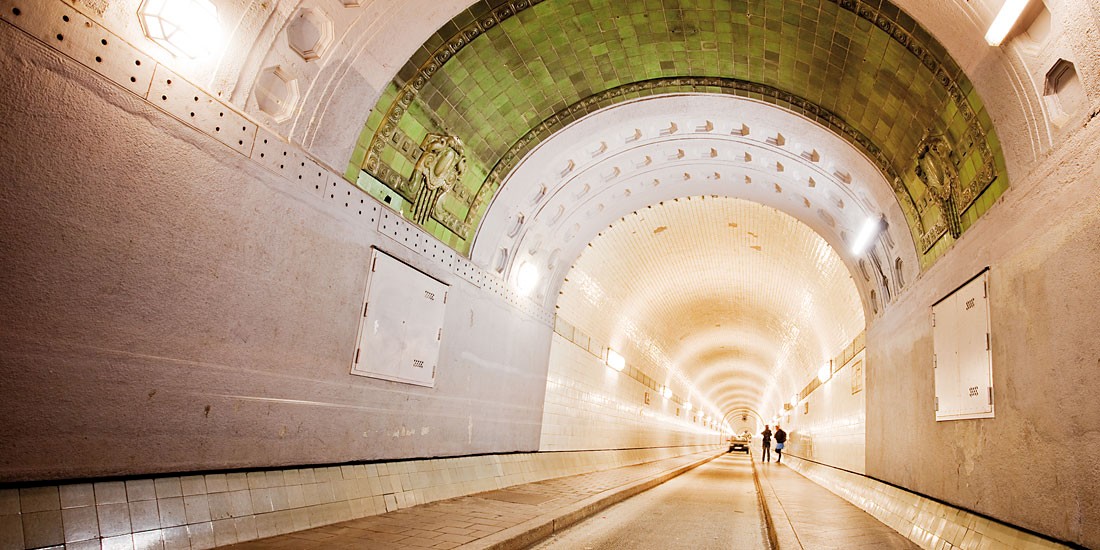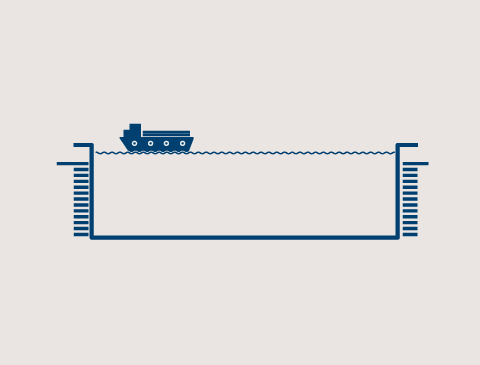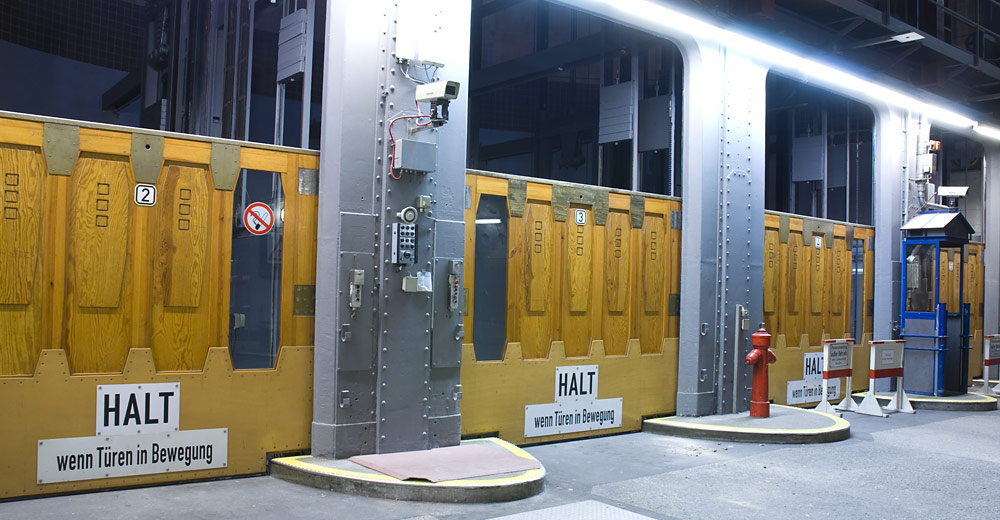Elbtunnel St. Pauli-Renovation, Hamburg
Clever and simply ingenious
The St. Pauli-Elbtunnel was considered a technical sensation when it was opened in 1911. Since 2011, it has been a "historic landmark of the German art of engineering". Not only traffic, but also drinking water crosses under the Elbe - through steel pipes from Mannesmann Line Pipe.
The "old" St. Pauli-Elbtunnel crosses the Norderelbe over a length of 426.5 meters and connects the northern harbor edge at the St. Pauli landing bridges with the Elbe island of Steinwerder with two tunnel tubes. Even today, it is still used annually by around 40,000 cars, over 300,000 cyclists and around one million pedestrians.
Historical Background
In 1895, around 20,000 shipyard workers and 25,000 dockers were employed in the Harbor of Hamburg. The ferry lines that had existed since 1888 could no longer cope with the flow of workers to the opposite side of the River Elbe. In order to get the immense commuter traffic under control regardless of the weather, it was decided in 1904 to build a tunnel.
A tunnel with two tubes and twelve elevators
Construction work began in 1907 under the direction of Otto Stockhausen, employing around 4,400 workers. No access ramps were built for the tunnel. To this day, the vehicles are transported by elevators instead - four elevator shafts with one car each on each bank side. For pedestrians, the tunnel is accessible via fixed stairways and passenger lifts. The tunnel was opened on September 7, 1911 for pedestrian traffic and on November 30, 1911 for horse-drawn and motor vehicles. From that time onwards, the new tunnel was used up to twenty million times a year.
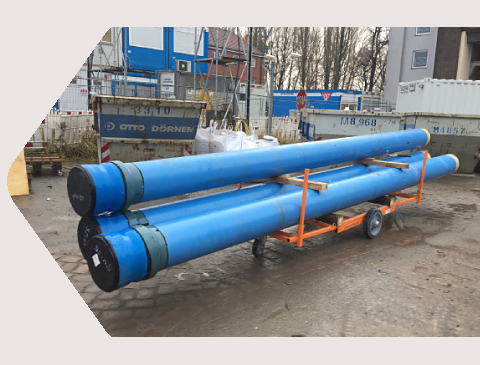
Hand trolleys were used to transport the 6 m long pipe sections to the lifts which took them down to the tunnel tube.
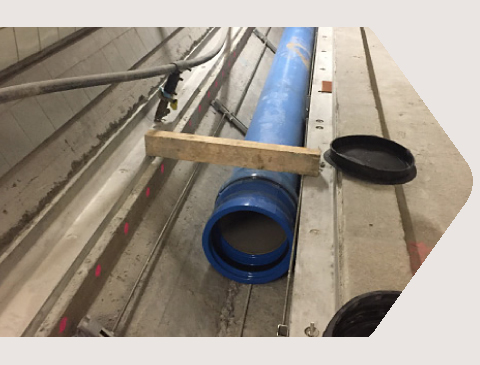
The HFI-welded steel pipes (DN 300) fitted precisely into the prepared ducts.
Extensive rehabilitation work
On behalf of the "Hamburger Port Authority", a complex rehabilitation project was started in 1994 with the aim of restoring the tunnel‘s original appearance of 1911 while installing modern technology. In 2010, after the refurbishment of the shaft buildings, it was the turn of the eastern tunnel tube. In the course of the work, the existing drinking water pipe was also to be replaced. In 2017, Mannesmann Line Pipe received an initial enquiry from the Hamburger Wasserwerke GmbH. Thorsten Schmidt, the responsible
division manager, forwarded the enquiry directly to ALPE Kommunal- und Umwelttechnik in Austria.
Alois Kluibenschädel from ALPE was delighted: "The tight space conditions in the tunnel and in the elevators made it clear that this is a case for our Fuchsrohr system." The system uses pipes in a standard length of 6 m, which need not be joined by welding. "With its axially force-locking DKM joints and space-saving fittings, the system withstands service pressures of up to 40 bar, and it is reliably protected against corrosion," says the ALPE Managing Director. With this special order, he did not miss the opportunity to personally present the system and application technology to the planners of the Hamburger Wasserwerke and also to inspect the construction site. "Mannesmann Line Pipe then supplied us with HFI-welded DN 300 ZSK steel pipes in lengths of 12 m, from which we produced the specified 6-m sections in Stams and delivered them to Hamburg, complete with the required fittings," says Alois Kluibenschädl, not without pride in having been involved in the rehabilitation of a historic landmark.
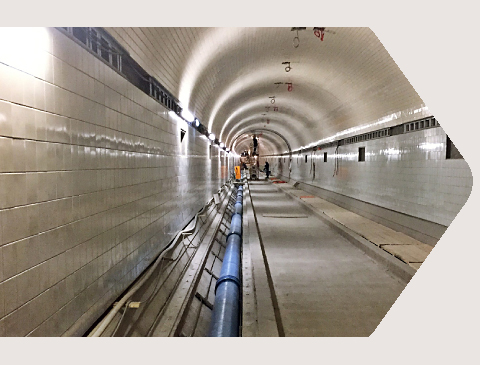
The 426.5 m long pipeline was installed completely without welding.
Drinking water for over two million customers
Laying the pipes without welding made the work much easier. The new pipeline passed the pressure test with flying colors, so it could be put into operation at the end of 2017 as part of the drinking water supply for over 2 million citizens of Hamburg. The east tunnel of the "old"
St. Pauli-Elbtunnel has been opened to traffic again in March 2019.
Work on
the west tunnel will commence in May.
Possibly also with HFI-welded pipes of the Fuchsrohr system.
The "old" St. Pauli-Elbtunnel
The people of Hamburg love it, the tourists are thrilled. The "old" St. Pauli-Elbtunnel has been part of Hamburg for over 100 years. The vertical clearance of the tunnel tubes – 4.7 m – is said to have been calculated to allow a "coachman with an upright whip in his hand" to pass through it. In the course of the extensive rehabilitation of the east tunnel, the entire tunnel skeleton consisting of 1,700 ring-shaped steel girders was excavated, around 200,000 rivet and screw joints were renewed and a total of 37 km of joints sealed.
Opening hours for pedestrians/cyclists:
24 h / 365 days a year; exception:
December 31 (New Year’s Eve) closed from 21:00 - 04:00 hrs.
The opening hours for motor vehicles vary due to further rehabilitation work on the western tunnel tube.
Prices:
Free of charge for pedestrians and cyclists
Motor vehicles: single ticket € 2.00
Further information:
Phone +49 (0) 40 - 300 51 701
